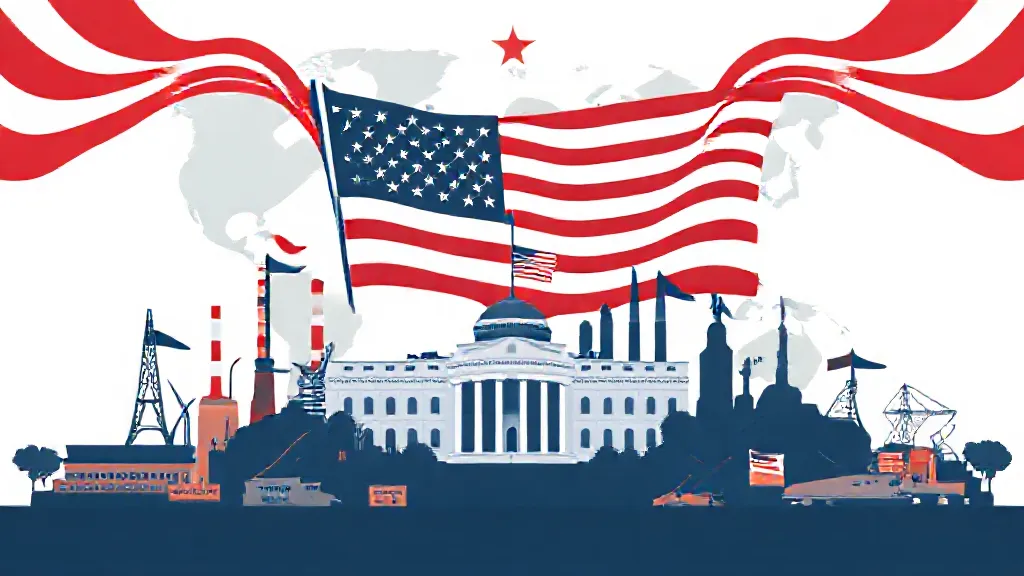The rise of the United States to superpower status is a complex narrative shaped by historical events, economic developments, and military strategies. This transformation began in earnest after the American Revolutionary War, when the fledgling nation emerged from colonial rule with aspirations of independence and self-governance. The establishment of a robust Constitution in 1787 laid the groundwork for a stable political system, which would prove essential for economic growth and international influence.
The Industrial Revolution: A Catalyst for Growth
The Industrial Revolution, which began in the late 18th century, served as a catalyst for American economic expansion. By the mid-19th century, the U.S.
had transitioned from an agrarian economy to an industrial powerhouse, characterized by rapid urbanization and technological innovation. The introduction of the telegraph, railroads, and factories revolutionized communication and transportation, allowing for the efficient movement of goods and people across vast distances. This industrial base not only strengthened the economy but also positioned the U.
S. as a key player in global markets.
World War I: A Turning Point in Global Influence
The United States' involvement in World War I marked a significant turning point in its international standing.
Entering the war in 1917, the U.S. provided crucial support to the Allied Powers, which ultimately led to their victory.
The post-war period saw the U.S. emerge as a creditor nation, with its economy booming while European nations struggled to recover.
The Treaty of Versailles and the establishment of the League of Nations positioned the U.S. as a leader in international diplomacy, albeit with a temporary retreat into isolationism in the 1920s.
The Great Depression and Its Aftermath
The Great Depression of the 1930s tested the resilience of the American economy and political system. However, the New Deal policies implemented by President Franklin D. Roosevelt not only helped to stabilize the economy but also expanded the role of the federal government in American life.
As the world faced economic turmoil, the U.S. increasingly became a refuge for those seeking stability, further enhancing its global reputation as a leader.
World War II: Establishing Military Dominance
The United States' role in World War II solidified its status as a global superpower. Entering the war after the attack on Pearl Harbor in 1941, the U.S.
mobilized its vast industrial resources to support the Allied forces. The successful development of atomic weapons and the subsequent bombings of Hiroshima and Nagasaki not only brought a swift end to the war but also marked the U.S.
as a formidable military power. The post-war era saw the establishment of the United Nations, with the U.S.
playing a pivotal role in shaping its mission and structure.
The Cold War: Ideological Conflict and Global Strategy
The Cold War defined much of the latter half of the 20th century, as the U.S.
engaged in a prolonged ideological struggle against the Soviet Union. This period saw the U.S.
invest heavily in military alliances, such as NATO, and engage in proxy wars around the globe, from Korea to Vietnam. The Marshall Plan exemplified America's commitment to rebuilding Europe and containing communism, further entrenching its influence in global affairs.
Economic Expansion and Technological Innovation
The post-Cold War era ushered in a period of unprecedented economic expansion for the United States.
The rise of technology and the Internet revolution transformed industries and created new economic paradigms. American companies like Apple, Microsoft, and Google became global leaders, setting trends that would shape the future of commerce and communication. The U.
S. dollar emerged as the world's primary reserve currency, solidifying America's economic dominance.
Contemporary Challenges and Global Leadership
Today, the U.
S. faces various challenges that test its superpower status, including economic inequality, political polarization, and rising competition from countries like China. However, its military capabilities, cultural influence, and technological advancements continue to play a significant role in global affairs.
The U.S. remains a key player in international organizations and continues to shape global policies on issues such as climate change, trade, and security.
Conclusion: The Legacy of American Superpower Status
The journey of the United States to superpower status is marked by resilience, innovation, and strategic foresight. As it navigates the complexities of the 21st century, understanding this historical context is crucial for comprehending the dynamics of global power and the role of the U.S.
in shaping a more interconnected world. The lessons learned from America's rise to power continue to provide insights into the challenges and opportunities that lie ahead for both the nation and the global community.
